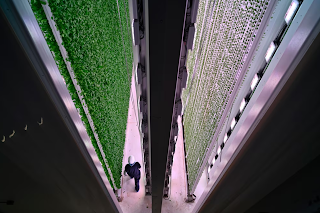Navigating the Crossroads: American Farmers Grapple with Climate Change and Modernization
For over half a century, American farmers have been tasked with a straightforward mission: increase production. From Agriculture Secretary Earl Butz's call to "plant from fencerow to fencerow" in the 1970s, agricultural output nearly tripled between 1948 and 2019. However, recent years have brought forth a more complex landscape. Climate change, extreme weather events, environmental concerns, and cultural shifts have introduced challenges, reshaping the traditional narrative of American agriculture.
Facing droughts, floods, and criticisms of practices like heavy chemical use and confined animal farming, farmers find themselves at a crossroads. The once-unwavering focus on growth and scale is now met with considerations of sustainability, climate-smart practices, and regenerative approaches. The narrative unfolds as farmers grapple with questions of profitability, succession planning, and the future of an agrarian system that has evolved over 12,000 years.
In this landscape, some farmers adhere to time-honored traditions, resisting the push towards "climate-smart" and "regenerative" practices. Others adopt radical technologies, redefining the very essence of farming. The article delves into the narratives of individual farmers, such as Steven Boender and Leighton Cooley, offering insights into their beliefs, struggles, and visions for the future.
The tensions between tradition and innovation are palpable, with climate change and sustainability emerging as central themes. The beef industry, grappling with health concerns and its environmental impact, explores avenues for profitability through crossbreeding and feed efficiency. Additionally, the article explores the rise of indoor vertical farming and controlled-environment agriculture, presenting contrasting examples of success and challenges.
The piece also sheds light on the economic complexities faced by farmers like Tyler Ribeiro and Jared Schilling, who navigate environmental concerns while contending with tight profit margins and regulatory pressures. The article concludes by highlighting initiatives within Native American communities, like the Siċaŋġu Food Sovereignty Initiative, which seeks to address food insecurity and build a local food system.
In a sector deeply rooted in tradition and identity, American farmers find themselves at a pivotal moment, balancing age-old practices with the imperatives of a changing world.
#AmericanFarming, #ClimateChangeAdaptation, #SustainableAgriculture, #InnovationInFarming, #AgriculturalChallenges

